1. Node.js Web Development by David Herron

“Node.js Web Development” by David Herron is a comprehensive and practical guide that equips developers with the knowledge and skills needed to build robust and scalable web applications. With a focus on the latest advancements in Node.js, Express.js, and ECMAScript, the book provides a step-by-step journey through the development process. Readers are not only introduced to the core concepts of server-side web development but are guided through practical examples, allowing them to apply their learning in real-world scenarios. The inclusion of Node.js version 14 ensures that developers stay abreast of the latest features and enhancements, empowering them to create high-performance applications.
A standout feature of the book is its attention to the deployment phase. By delving into the intricacies of deploying applications with AWS, the author offers valuable insights into making applications accessible to a broader audience. This practical aspect enhances the book’s applicability, providing developers with a holistic understanding of the development lifecycle, from coding to deployment. Whether you’re a beginner seeking a solid foundation in web development or an experienced developer aiming to stay current with the latest technologies, “Node.js Web Development” serves as an invaluable resource for mastering server-side development with Node.js.
File size
2. The Complete Reference by Herbert Schildt
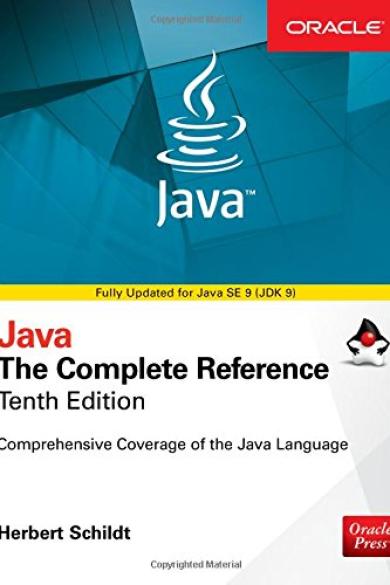
Herbert Schildt’s The Complete Reference series stands as a cornerstone in the realm of computer programming literature, offering exhaustive guides on various programming languages. Known for its comprehensive coverage, Schildt’s books, such as “Java: The Complete Reference” and “C: The Complete Reference,” are revered for their detailed exploration of syntax, libraries, and advanced features. These books cater to a diverse audience, providing a structured learning path that accommodates both beginners and seasoned developers. Schildt’s adept writing style transforms intricate programming concepts into digestible content, complemented by practical examples and code snippets that facilitate a hands-on understanding of the material. As authoritative reference materials, these books have become go-to resources for programmers looking to master specific languages and gain a deep understanding of their nuances.
The success of Herbert Schildt’s “The Complete Reference” series lies in its ability to demystify complex programming languages, offering a holistic approach that spans from foundational concepts to advanced techniques. Beyond syntax and libraries, the books delve into best practices, design principles, and real-world applications, making them invaluable companions for programmers navigating the intricacies of Java, C, and other languages. Whether you’re embarking on your programming journey or seeking to expand your expertise, Schildt’s meticulous and inclusive approach ensures that “The Complete Reference” series remains an enduring and indispensable resource in the ever-evolving landscape of computer programming.
File size
3. Algorithms by Robert Sedgewick
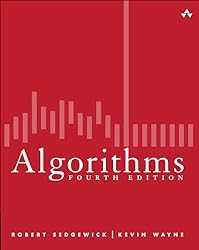
“Algorithms” by Robert Sedgewick is a foundational resource that illuminates the intricate world of computer algorithms. Co-authored with Kevin Wayne, this book not only serves as a comprehensive guide but also forms the basis for the widely acclaimed algorithms course at Princeton University. Sedgewick’s emphasis on clarity and practicality is evident throughout the text, as he covers fundamental data structures and advanced algorithms, illustrating their applications through real-world problem-solving scenarios. The book’s accessibility, coupled with clear explanations and Java code examples, makes it an invaluable tool for both students and professionals seeking to master the art and science of algorithm design and analysis.
Sedgewick’s “Algorithms” stands out for its ability to seamlessly blend theoretical concepts with hands-on implementation, offering readers a holistic understanding of algorithms and their applications. Whether delving into the intricacies of sorting algorithms or exploring graph processing techniques, Sedgewick’s approach fosters a deep comprehension of algorithmic principles. This book remains an enduring reference, guiding learners through the essential elements of algorithmic thinking and empowering them to tackle diverse computational challenges with confidence and proficiency.
File size
4. Learn Python 3 the Hard Way by Zed Shaw
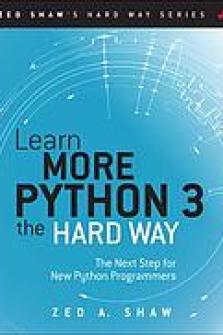
“Learn Python 3 the Hard Way” by Zed Shaw is a widely acclaimed book that takes a hands-on and practical approach to teach Python programming. Following the author’s successful “Hard Way” series, this book is designed for beginners who want to build a solid foundation in Python. The “Hard Way” approach involves actively typing out code, debugging, and solving problems to reinforce learning through repetition and practice.
Readers are guided through a series of exercises, each carefully crafted to incrementally introduce new concepts and build upon previously acquired skills. The book covers essential topics such as variables, data types, loops, functions, and object-oriented programming, among others. Zed Shaw’s direct and no-nonsense teaching style aims to instill confidence in learners by challenging them to confront and overcome coding hurdles independently.
“Learn Python 3 the Hard Way” emphasizes the importance of active engagement with the material, making it an ideal resource for those who prefer a hands-on and immersive learning experience. The book’s practical exercises and emphasis on repetition ensure that readers not only grasp the syntax of Python but also develop problem-solving skills crucial for programming.
File size
5. Head First Design Patterns, 2nd Edition (2021)
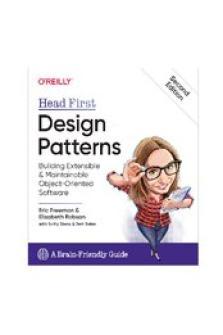
“Learn Python 3 the Hard Way” by Zed Shaw is a widely acclaimed book that takes a hands-on and practical approach to teach Python programming. Following the author’s successful “Hard Way” series, this book is designed for beginners who want to build a solid foundation in Python. The “Hard Way” approach involves actively typing out code, debugging, and solving problems to reinforce learning through repetition and practice.
Readers are guided through a series of exercises, each carefully crafted to incrementally introduce new concepts and build upon previously acquired skills. The book covers essential topics such as variables, data types, loops, functions, and object-oriented programming, among others. Zed Shaw’s direct and no-nonsense teaching style aims to instill confidence in learners by challenging them to confront and overcome coding hurdles independently.
“Learn Python 3 the Hard Way” emphasizes the importance of active engagement with the material, making it an ideal resource for those who prefer a hands-on and immersive learning experience. The book’s practical exercises and emphasis on repetition ensure that readers not only grasp the syntax of Python but also develop problem-solving skills crucial for programming.
File size
6. Learning PHP, MySQL & JavaScript by Robin Nixon
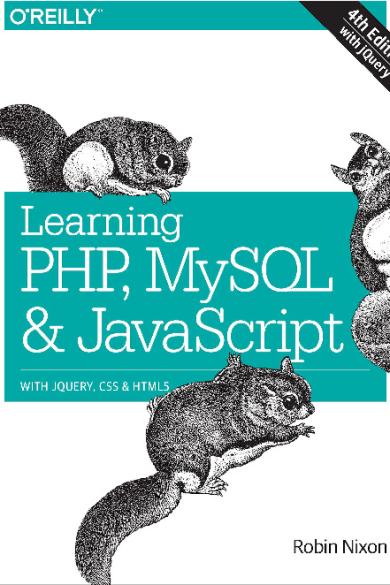
Learning PHP, MySQL & JavaScript by Robin Nixon serves as an indispensable resource for individuals seeking a comprehensive grasp of web development essentials. Tailored for beginners and intermediate developers, the book takes a hands-on approach, guiding readers through PHP for server-side scripting, MySQL for database management, and JavaScript for client-side scripting. With practical examples and real-world projects, readers gain a holistic understanding of these crucial technologies, emphasizing their seamless integration to create dynamic and interactive web applications. Whether it’s mastering the fundamentals or honing skills for modern web solutions, this book provides a well-structured and insightful journey into PHP, MySQL, and JavaScript.
Nixon’s book stands out for its ability to balance theoretical concepts with practical application. The clear explanations and emphasis on real-world projects empower readers to not only understand the intricacies of each technology but also to implement them effectively in a cohesive development environment. “Learning PHP, MySQL & JavaScript” stands as a valuable guide for those looking to build a strong foundation in web development or enhance their existing skill set with a focus on practical and integrated solutions.
File size
7. A Tour of C++

A Tour of C++ is a renowned book by Bjarne Stroustrup, the creator of the C++ programming language. Aimed at programmers with prior experience in programming but new to C++, the book provides an insightful exploration of the language’s features and capabilities. Stroustrup takes readers on a journey through the essentials of C++, introducing core concepts such as classes, objects, templates, and the Standard Template Library (STL). The book’s emphasis on practical examples and real-world applications ensures that readers not only understand the syntax but also grasp the underlying principles of C++.
One of the notable features of “A Tour of C++” is its focus on modern C++ programming practices. Stroustrup introduces features from recent C++ standards, guiding readers towards writing efficient, expressive, and maintainable code. The book is structured as a concise and informative tour rather than a comprehensive reference, making it an excellent resource for those who want a quick yet thorough overview of C++ or are transitioning to the language from other programming backgrounds.
File size




